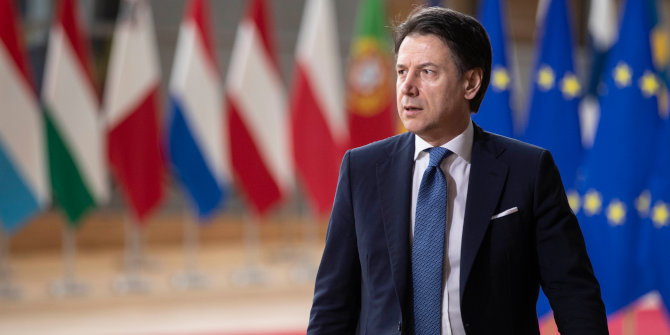The European Commission has proposed a ban on Russian crude oil imports, which would be phased in over a period of six months. Gubad Ibadoghlu provides an overview of Russian energy exports and assesses what the potential impact of the ban might be.
On 4 May, the European Commission proposed new sanctions against the Kremlin, which will include a six-month phase-out of Russian crude oil imports. The proposal will need approval from the EU’s 27 member states, which is uncertain. Hungary and Slovakia say their economies are too reliant on Russian crude to participate in such a ban, raising the possibility of opt-outs for certain countries.
Imposing measures to reduce or entirely cut Russian energy supplies to the EU has been a complicated task for the bloc. Speaking to the European Parliament about the proposed oil ban, Commission President Ursula von der Leyen stated that “it will not be easy… but we simply have to do it”.
The fifth package of EU sanctions against Russia came into force on 8 April. It included a ban on purchasing Russian coal from August 2022 and a ban on Russian ships entering EU ports. There is no question energy is the most important element in the sanctions against Russia. But what will happen to the Russian energy market in future is difficult to predict.
Russian energy exports: an overview
The importance of Russian energy for Europe and the rest of the world is underlined by looking at last year’s figures for oil, gas, and coal exports. In 2021, Russia produced 10.1 million barrels of oil per day, of which 45% or 4.7 million barrels were exported. About half of Russia’s oil exports went to members of the Organization for Economic Co-operation and Development (OECD), mainly Germany, the Netherlands, and Poland. China is also one of Russia’s leading importers of crude oil.
Russia’s annual gas exports last year amounted to 8.9 trillion cubic metres, of which 74% went to OECD countries (mainly France, Germany, Italy, and Turkey). According to statistics for 2020, dependence on Russian gas was 94 per cent in Finland, 79 per cent in Estonia, 77 per cent in Bulgaria, 49 per cent in Germany, 46 per cent in Italy, 40 per cent in Poland and Hungary, and 24 per cent in France. The share of OECD countries (mainly Germany, the Netherlands, and Turkey) in exports of 262 million tons of coal last year was 32 per cent.
According to the Russian Ministry of Finance, Russia’s crude oil exports in 2020 amounted to about $73.4 billion, which was 40 per cent less than the previous year’s record of $121.4 billion. In general, Russia’s revenues from oil exports in 2020 were the lowest they have been in recent years. In 2021, the value of Russia’s crude oil exports increased by 52 percent and exceeded $110.1 billion. The peak of oil revenues was recorded in 2012 when Russia exported crude oil worth about $180.9 billion.
As for Russia’s total revenues from energy exports, it should be noted that Russia’s primary source of income from this source is crude oil exports. In 2021, Russia earned $110.12 billion from the export of 230 million tons of crude oil, $70 billion from the export of 144.3 million tons of oil products, and $55.51 billion from the export of 203.5 billion cubic metres of natural gas. In addition, last year, Russia earned $7.32 billion from the export of liquefied natural gas (LNG).
In 2021, 185.1 billion cubic metres of Russia’s natural gas exports went to “far abroad” countries. Of this, 10 billion cubic metres went to China, 174.9 billion cubic metres to the European market (including Turkey), and sales in the European market alone amounted to 148 billion cubic metres. Last year, Turkey imported 15.98 billion cubic metres of gas from Russia through the Blue Stream pipeline, and 10.9 billion cubic metres through the TurkStream pipeline.
A work in progress
The European Union, the United States, and the United Kingdom want to eliminate their dependence on Russian energy resources. At the same time, they are looking for alternatives to stabilise prices on world markets and are negotiating with the world’s largest oil and gas exporters. But it is still impossible to talk about stabilising prices or reducing dependence on Russian energy resources because these processes will take time.
It is unlikely that significant results will be achieved before the end of 2022 given that Russia provides ten per cent of the world’s oil and more than a third of the EU’s natural gas. According to Eurostat, Russia had a 43.9 percent share of EU gas imports in 2020. This raises the question of what can be achieved by the EU’s energy sanctions, at least in the short to medium-term.
There are significant challenges ahead if Europe is to reduce its dependence on Russian oil and gas exports. The United States has already announced that it will not buy Russian oil; the United Kingdom and Germany have stated that they will achieve this by year-end. The proposed EU bans on Russian oil and coal are intended to make Putin pay a high price for his actions in Ukraine, but to have the desired effect, they will have to be implemented in a credible way. It remains to be seen if the EU has the capacity to do this.
Note: This article gives the views of the author, not the position of EUROPP – European Politics and Policy or the London School of Economics. Featured image credit: kremlin.ru





